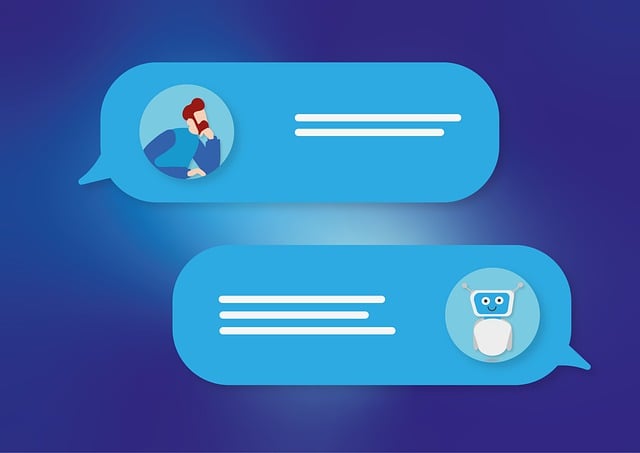AI chatbots online have advanced significantly, evolving from scripted responders to sophisticated systems capable of processing natural language and learning from each interaction. These chatbots now facilitate human-like conversations across various sectors including customer service, finance, e-commerce, healthcare, and education by leveraging natural language processing and machine learning. They offer scalable support, personalized recommendations, and round-the-clock availability, improving operational efficiency and customer satisfaction. The integration of these AI systems into different industries is transformative, enabling more efficient transaction handling, immediate responses to inquiries, and tailored shopping experiences. As they become more adept at understanding context and subtleties, ethical considerations such as data privacy and user consent are crucial to ensure trust and accountability. The future of AI chatbots is promising, with ongoing advancements set to enhance their human-like interactions and expand their applications responsibly.
In recent years, the advent of generative AI chatbots online has marked a significant leap in digital communication. This article delves into the transformative journey of these AI-driven entities from rudimentary scripts to sophisticated virtual assistants. We will explore their key features, capabilities, and the myriad ways they are reshaping customer service, e-commerce, education, healthcare, and beyond. As we navigate through the evolution and real-world applications of AI chatbots, we will also consider the ethical landscape and the challenges that lie ahead in this rapidly advancing field. Join us as we unravel the intricacies of generative AI chatbots online and ponder their impact on our digital interactions and future prospects.
- Understanding Generative AI Chatbots Online: The Basics and Beyond
- The Evolution of Chatbots: From Simple Scripts to Sophisticated AI Assistants
- Key Features and Capabilities of Advanced AI Chatbots in Online Environments
- Real-World Applications of Generative AI Chatbots Across Industries
- Navigating the Future of AI Chatbots: Ethical Considerations, Challenges, and Potential Developments
Understanding Generative AI Chatbots Online: The Basics and Beyond

Generative AI chatbots are sophisticated digital entities capable of engaging in conversational exchanges with users through text or voice inputs. These chatbots harness the power of artificial intelligence to understand and generate human-like responses, making interactions as natural and intuitive as possible. Online, AI chatbots serve a myriad of functions from customer service to personal assistance, leveraging natural language processing (NLP) and machine learning algorithms to interpret intent and context within conversations. They are trained on vast datasets to recognize patterns in human speech and can adapt over time through continuous exposure to new types of queries and dialogues, enhancing their conversational abilities and expanding their knowledge base.
Beyond the basics, generative AI chatbots are integral components of various online platforms, providing scalable solutions for businesses and users alike. They are designed to handle a wide array of tasks, from answering FAQs to guiding users through complex processes with step-by-step instructions. These chatbots can be tailored to specific industries, equipped with domain-specific knowledge to address specialized inquiries. Moreover, they integrate seamlessly with other technologies such as predictive analytics and personalized recommendation engines, offering a more holistic user experience. As AI technology advances, generative chatbots are becoming increasingly adept at understanding nuances and managing sophisticated interactions, pushing the boundaries of what’s possible in human-computer communication.
The Evolution of Chatbots: From Simple Scripts to Sophisticated AI Assistants

In the early days, chatbots were rudimentary tools that operated on simple scripted responses. These basic bots could handle a limited set of queries by matching user input with predefined answers, often leading to frustrating interactions if the user’s input didn’t align precisely with the scripts. Over time, as artificial intelligence (AI) technology advanced, these early chatbots evolved into more sophisticated AI assistants, capable of understanding and processing natural language. The integration of machine learning algorithms allowed these AI chatbots online to learn from interactions, improving their ability to understand context and nuance. This progression marked a significant shift in how users could engage with chatbots, moving from repetitive, formulaic exchanges to more fluid, natural conversations.
The current landscape of AI chatbots online is a testament to the incredible strides made in AI and natural language processing (NLP). Today’s chatbots are equipped with deep learning capabilities, enabling them to handle complex queries, provide personalized responses, and even perform tasks such as scheduling appointments or setting reminders. These advanced systems can draw from vast datasets to generate replies that are contextually relevant and informative. The evolution of chatbots from simple scripts to sophisticated AI assistants has been nothing short of transformative, opening up new possibilities for user engagement across various industries and platforms, enhancing customer service experiences, and setting the stage for even more innovative applications in the future.
Key Features and Capabilities of Advanced AI Chatbots in Online Environments

Advanced AI chatbots operating within online environments are sophisticated tools designed to simulate human-like conversations with users. These systems leverage natural language processing and machine learning algorithms to understand, interpret, and respond to a wide array of queries in real-time. A pivotal feature of these chatbots is their ability to learn from interactions, continuously improving their responses and performance through each exchange. This adaptive learning capability ensures that as users engage with the AI chatbot online, the quality of the interaction enhances, leading to more accurate and contextually relevant conversations over time.
Furthermore, these AI systems are equipped with multilingual support, enabling them to converse fluently in multiple languages, thus breaking down language barriers and making information and services accessible to a broader audience worldwide. Additionally, they integrate with various databases and content management systems, allowing them to provide users with personalized information and recommendations based on their preferences and past interactions. The integration of AI chatbots within online environments is not only enhancing customer service but also streamlining operations for businesses by automating responses, reducing wait times, and handling inquiries around the clock without human intervention. This scalability and availability make them indispensable tools for modern digital ecosystems.
Real-World Applications of Generative AI Chatbots Across Industries

Generative AI chatbots have become integral across various industries, leveraging advanced natural language processing capabilities to interact with users in a manner that closely resembles human conversation. In customer service, these AI-driven systems are deployed to handle inquiries, provide support, and resolve issues without the need for human intervention. This not only streamlines operations but also ensures consistent and immediate responses to a vast array of queries. The finance sector utilizes chatbots to guide users through complex transactions, offer financial advice, and manage customer interactions with security and efficiency. In the realm of e-commerce, generative AI chatbots assist customers in finding products, answering questions about shipping and returns, and providing personalized shopping experiences. Moreover, in the field of healthcare, these chatbots are increasingly used to provide patients with information on symptoms, treatments, and appointments, thereby improving patient engagement and satisfaction while alleviating the burden on medical staff. The educational sector also benefits from AI chatbots, offering students tutoring, answering academic questions, and facilitating learning in a personalized way. As these intelligent systems continue to evolve, their applications are likely to expand further, bringing the convenience of AI chatbots online into even more facets of daily life and business.
Navigating the Future of AI Chatbots: Ethical Considerations, Challenges, and Potential Developments

AI chatbots online have become increasingly sophisticated, with their capabilities extending beyond simple text exchanges to include complex problem-solving and nuanced understanding of user intent. As we navigate the future of these systems, ethical considerations take center stage. The potential for AI chatbots to enhance customer service, provide 24/7 support, and offer personalized assistance is vast, yet it is accompanied by a need for stringent data privacy measures. The design of AI chatbots must prioritize user consent and transparency in how data is collected and utilized. Moreover, as these systems become more integrated into daily life, ensuring they are free from biases that could lead to discriminatory practices becomes paramount.
Challenges abound in the realm of AI chatbot development, including addressing the interpretability of AI decisions, which is crucial for user trust and accountability. Ensuring the accuracy of information provided by these systems and maintaining a high standard of security against potential cyber threats are also critical. The future development of AI chatbots online promises to bring about transformative changes in various sectors, from healthcare to education. Continuous advancements in natural language processing and machine learning will likely enhance their conversational abilities, making interactions more seamless and human-like. Concurrently, the integration of multimodal inputs such as voice and visual data could broaden their scope and applicability. As AI chatbots evolve, it is imperative to stay vigilant regarding ethical standards and to foster an environment where innovation goes hand in hand with responsible use.
In concluding our exploration of generative AI chatbots online, it’s evident that these advanced tools represent a significant leap forward in digital communication. From their humble beginnings as rudimentary scripts to their current sophisticated form, AI chatbots have revolutionized user engagement and industry operations across the board. As we look ahead, the potential for these systems to grow more nuanced, context-aware, and helpful is immense. However, it’s imperative to address the ethical implications and challenges that accompany such advancements. By navigating these responsibly, AI chatbots online can continue to enhance our interactions, streamline services, and provide unprecedented value across various sectors. The future of generative AI chatbots promises a seamless blend of convenience, efficiency, and intelligent assistance, making them an integral part of the digital landscape.
